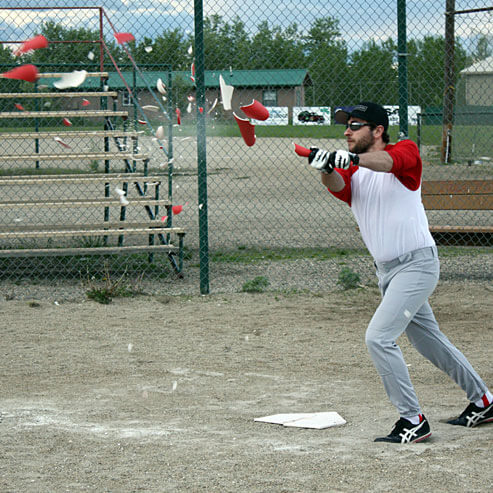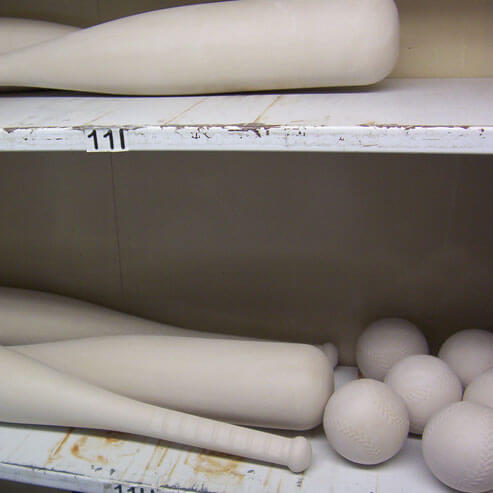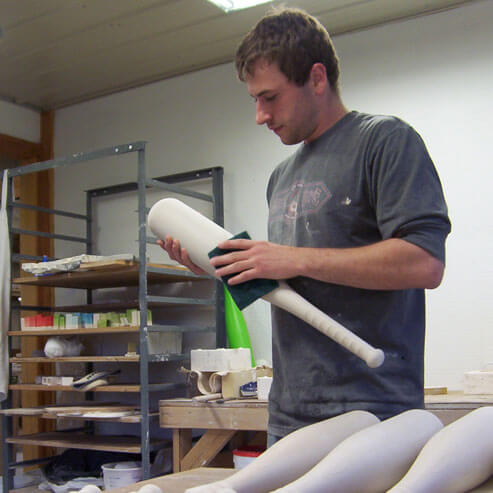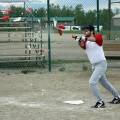
Red Lodge Clay Center – Short-Term Resident 2010
Forrest Gard comes from Athens, Ohio. He studied art at Ohio University and earned his B.F.A. in Ceramics from O.U. in November of 2009. Forrest’s art is influenced by the material properties of ceramic, functional objects, fragile materials, audience interaction, and play. Often his work is not completed until the viewer participates with the object(s). After his Residency at Red Lodge, Forrest will be teaching art to elementary school children at the Dairy Barn Cultural Arts Center in Athens, Ohio. This fall, Forrest will be moving to Gainesville, Florida where he will continue to study ceramics at the University of Florida as a Post Baccalaureate student.
There are many driving forces that play an important role in my artist practice. These include, the material properties of ceramic, functional objects, fragile materials, audience interaction, and play (child’s play, adolescence, and adult’s play.)
A very important part of my work is my choice of materials. I work primarily with clay and use a combination of traditional and non-traditional processes. Certain ceramic objects have a degree of preciousness and I like to use this to my advantage. I consider utility to be one of the most valuable attributes clay has to offer. Ceramic is a strong and durable material that industry uses to make a variety of products. For example, dishes, bricks, sewer pipes, roof shingles, tiles for floors and walls, bathtubs, toilets, sinks, the list goes on. Even though many of these objects are designed for use, they will eventually break because of the limitations of the material.
Although I never limit myself to one way of making, I often create my artwork through the slip-casting process, this process originates from industry and is used to produce multiples of the same object. My intent in working this way moves the focus away from handmade object and raises questions more about the item(s) being presented and why.
Personally, I feel that when a ceramic object breaks it signifies a moment of regret. However, I also feel that this moment, of transformation, is visually exciting. In addition to the visual transformation, I feel that the sound of a delicate object breaking is very fascinating; this sound usually can have negative associations such as accident or misuse.
I am also interested in the idea of “play” and “interaction”, specifically, child’s play and the carryover into adult’s play. For example, I am interested in how children often play roughly with their toys and throw things or build a tower only to knock it down a few seconds later. Adults are no exception; in fact they are worse. Our culture is surrounded by immaturity. The demolition derby is a good example. This is an event where drivers deliberately drive into each other’s cars only to smash them to the point of losing function.
I create objects out of porcelain to make my audience think about concepts related to play and the taboo of playing with a precious and fragile material. I am interested in the interaction between the gallery audience and my work. I want my objects to be viewed as precious art objects while at the same time I want them to have the potential to be used and played with. Recently I have been making work that the audience can interact with in the gallery. GO, GO, GO, my undergraduate thesis exhibition, featured one hundred slip-cast porcelain toys cars and an eight foot tall ramp with stairs leading to a start point, finishing with a ceramic car flying through the air and landing (often breaking) on the gallery floor. By allowing the audience the opportunity to interact with my artwork I want them to take home an experience of use and interaction with a ceramic object that is functioning in a new way to push the ideas of preciousness and delicacy in juxtaposition to the destructive culture in which we all live.








